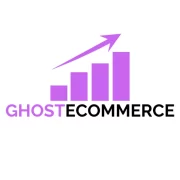Web and mobile applications have become more important in both our business and personal lives. Many web development services (companies) are searching for a better option for creating mobile and online apps as a result of this revolutionary transformation, and Angular serves as one of them.
The Angular concept is a typescript-written JavaScript structure. Google created it with the intention of separating an application’s functionality from DOM control. They refer the framework to as the “Superheroic JavaScript MVW Framework” because of its amazing and spectacular features.
Many developers admired and used angular to create solutions for various business applications. Google first unveiled Angular in 2009, and since then, they have made numerous updates to the Angular framework available. The newest version of the Angular framework, Angular 13 features, provides developers with a number of unique capabilities.
In this article, we’ll compare the features of both Angular releases so you can choose the one that best meets your requirements. So let’s start.
Angular 12
The 12th iteration of the Angular web framework, named Angular v12, has released on May 12, 2021. Within a few days of its debut, this edition of the Angular framework experienced a huge increase in popularity and demand due to its incredible capacity for creating front-end apps.
Angluar 13
The latest iteration of the Angular web framework, known as Angular v13, has released on November 3, 2021. Angular 13 differs from its previous twelfth version thanks to some fantastic new features. Here are a few of its salient characteristics:
Angluar 13 features
View Engine has been terminated
The most recent version, Angular 13, no longer supports the old View Engine. Relying on View Engine adds to the complexity of Angular js 13 source code and comes with maintenance costs. Ivy is currently the only viewing engine that Angular supports in order to prevent that bother.
Removed support for IE 11
With version 13, Angular will stop supporting Internet Explorer 11. Eliminating IE 11 leads in a reduced pack size and quicker program loading, which is a good thing. These improvements also enable Angular to access contemporary site capabilities like style sheet properties and web transitions via native web APIs.
However, due to the enhanced API and absence of IE-specific poly-fills, apps will load quicker. Additionally, it does away with the necessity for differential loading.
Versions of Node.js before 12.20 are just no longer offered
In Angular 13 features, Node.js versions older than 12.20.0 are no longer supported. This is due to the fact that the Angular js packages now make use of the sub path pattern-based Node.js package export capability.
More effective testing and debugging
The testing and debugging functionality in the Angular framework has significantly improved in Angular 13. Two testing methods are available in Angular 13: Tested. initTestEnvironment and TestBed. configureTestingModule.
These two techniques give programmers the most recent modules to build and verify the code at the conclusion of each program or class. It allows for increased (Document Object Model) performance and effectiveness.
Performance and Angular CLI improvements
It might surprise Angular 13 features to learn that Angular now supports persistent build-cache by default, which has increased build speed by 68%. Additionally, developers now have access to more ergonomic options than ever before, which has undoubtedly increased the framework’s potential. This straightforward syntax makes Angular CLI functionality available. J-son:
Changes in Router
Routing makes switching between views simpler for us. By translating a browser’s address as a request to alter the view, it makes navigation easier. When the new connectivity cancels the previous navigation, the gateway does not change the browser’s URL.
There were a number of compatibility concerns with earlier versions of Angular, most importantly, with query parameters. For instance, anything in query parameters that comes after the default URL serialized drops a question mark. The most recent upgrade, however, improves the compatibility of query parameters with question marks.
Unified Framework for Angular 13
The Angular web development’s building blocks are called components. Angular’s cohesive pieces resemble trees, since they built them from suitable components with associated functionalities. Through a streamlined API, these tightly packaged components are accessible to all Angular apps. Reusability and maintainability are two of Angular architecture’s core benefits.
Conclusion
As you can see, there are a lot of great features that Angular 13 has in store for us. While Angular 11 has been out for a few months, the changes that come along with Angular 13 features are worth making the upgrade. If your project is using Angular 12, make sure to consider the new possibilities when you decide it’s time for the next update.









Comments